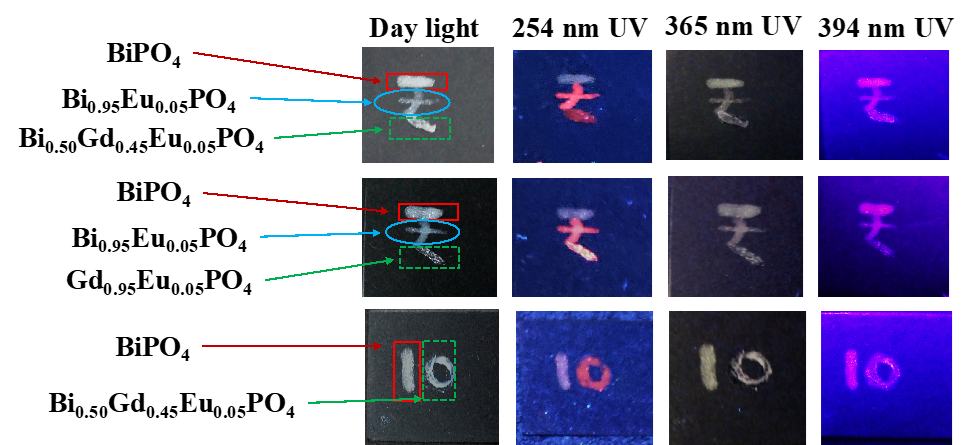Context:
- In a major development, Indian scientists from the Institute of Nano Science and Technology (INST) and the Bhabha Atomic Research Centre (BARC) have unveiled a new security ink aimed at combating counterfeiting.
- The innovative ink utilizes nanoparticles and is designed to provide an advanced level of security for sensitive documents, such as currency notes and passports, by making them more difficult to replicate.
Composition and Synthesis Process:
- The new security ink is based on a unique composition of strontium bismuth fluoride (Sr2BiF7), which is doped with lanthanide ions. The ink's nanoparticles are synthesized using a simple coprecipitation technique, offering a scalable and efficient method for production. The ink is then mixed with polyvinyl chloride (PVC) ink and printed using a screen printing technique, making it adaptable for mass production.

Features of new ink:
· One of the most remarkable features of this new ink is its dual fluorescence ability. The ink emits a blue glow under ultraviolet (UV) light at 365 nm, and a magenta hue under UV light at 395 nm.
· Furthermore, it also fluoresces with an orange-red color when exposed to near-infrared (NIR) light at 980 nm.
· This combination of fluorescence under different types of light makes it incredibly difficult for counterfeiters to replicate the ink, enhancing the security of documents printed with it.
What is Counterfeiting?
- Counterfeiting refers to the act of creating a false or fraudulent copy of something with the intent to deceive others into believing it is the original. This can apply to a variety of goods, documents, and currencies, and is done with the goal of defrauding people or organizations.
Some Common Examples of Counterfeiting:
- Counterfeit Money: This is one of the most common forms of counterfeiting, involving the creation of fake currency notes or coins that are passed off as legal tender.
- Counterfeit Documents: This includes the forging of official documents like passports, visas, certificates, and other legal or identification papers.
- Counterfeit Products: This encompasses the production of fake versions of branded items, such as luxury goods, medicines, electronics, and consumer products.
Threats Posed by Counterfeiting:
- Economic Terrorism: Counterfeit money can be used as a tool to destabilize the nation's economy by flooding the market with fake currency.
- Inflation: The circulation of counterfeit currency can increase the overall money supply, potentially leading to inflation by devaluing legitimate currency.
- Loss of Public Confidence: Widespread counterfeiting erodes public trust in the financial system and economy, leading to a lack of faith in money, goods, and services.
- Funding of Criminal Activities: Profits made from counterfeiting can fund illegal operations, such as organized crime, terrorism, or human trafficking, creating further social instability.
Conclusion:
The development of this new security ink is a significant step forward in the fight against counterfeiting. With its unique properties and ease of production, it has the potential to provide an additional layer of security for sensitive documents and currency notes.







